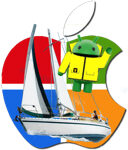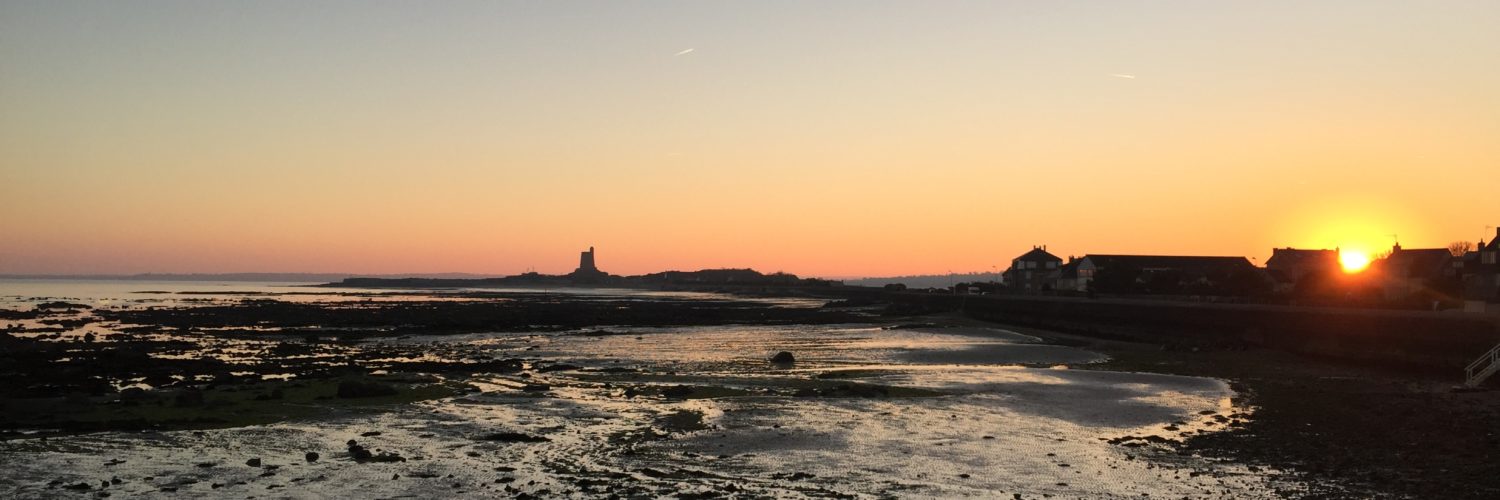Christmas is coming and, whether the celebration is religious or pagan, so traditional gifts.
You've no doubt guessed my passion for marine charting, but before electronic charts, I hold a special attachment to paper charts. I started sailing with SHOM charts in black and white, accompanied by pretty calligraphy engravings representing remarkable capes, alignments. Then appeared the colored charts, flat, difficult to store in a sailboat of 8 meters high. I bought charts from the British Admiralty, even more colourful, impossible formats, with complicated folding and cutting in the form of cartridges. Finally I discovered the West Indies charts Imray, of a reduced format, laminated and folded in protective plastic envelopes, a revolution on chart tables. Then SHOM also produces folded charts, "P" for Piacenza, that I sold for several years.
But this generally only represents the 35 Later years of marine charting.
I was therefore particularly fascinated by the two books that follow, maybe you already know because not recent, but which are really worth taking advantage of this festive period to be offered them, if you did not yet got.
 Olivier Chapuis – Charts of the coast of France – Editions du Chasse-Marée 2007
Olivier Chapuis – Charts of the coast of France – Editions du Chasse-Marée 2007
The author
Doctor of History and Master's degree in Geography, Olivier Chapuis is a specialist in the history of nautical cartography and navigation. He devoted his thesis to it ("At sea as in the sky", University Press, 1999), awarded by the Académie de Marine and Grand-prix de la Mer from the Association des écrivains de langue française in 2000.
Offshore racer of 1981 down to 1989, 3in the Mini-Transat in 1983, navigator with Paul Vatine in multihull, he is also a seasoned sailor. Journalist at the magazine "Voiles et Voiliers" for several years, He is the author of several booklets (weather, Charting, GPS, Electronic navigation). He also writes a blog I appreciate (¹).
The book
Olivier Chapuis tells the story of charts of the French coastline 1500 to the years 2000. Advances in cartography reflected the technological advances of the first half of the nineteenth century, then the rapid evolution of technical means from 1850, and finally the explosion of electronics from the second half of the twentieth century. Exceptionally illustrated, This superb book synthesizes five centuries of history of French marine and terrestrial cartography. These documents also evoke the diversity of the shorelines, of the events and the men who inhabited them. Masterpieces of maps are reproduced in large format, on fold-out pages, which allows you to appreciate all its beauty. Presented in an illustrated box, in a hardcover edition with dust jacket, it is also a beautiful object to behold in the marine book case.
 Olivier Le Carrer – Paper Oceans – Editions Glénat 2006
Olivier Le Carrer – Paper Oceans – Editions Glénat 2006
The author
Journalist and sailorman, Olivier Le Carrer has been sailing most of the world's seas for thirty years. For a long time he was in charge of the magazine "Bateaus", He has also authored several reference books on the history of boats and the art of navigation. Passionate about cartography, member of the Geographical Society, He likes to explore the archives in search of unpublished treasures. He created the first library in Brittany entirely dedicated to maritime adventure.
The book
The image of our planet and the contours of the continents have taken shape over the centuries, as maritime explorations and inventions of scientific instruments were made. A clumsy and often erroneous drawing of land and oceans, We gradually moved on to precise visualization, not only coasts, but also from the depths. The history of this evolution is fascinating, for each advance was the result of an adventure. Early voyages guided by approximate portolans to the discovery of longitude by the chronometer, from the position determined by the astrolabe to that of the current GPS, it is the imbricated story of the discovery of the seas and the charting of our planet that tells us this well-researched book, illustrated by the most beautiful charts. Here we discover the exciting evolution of knowledge from the fanciful speculations of the early days to the almost perfect accuracy of modern documents, thanks to an exceptional iconography from the collection of the Bibliothèque Nationale de France.
Paper Oceans: History of nautical charts, From portolans to digital maps Paperbound– 8 November 2006
These two books take on their full meaning, For me, with regard to the electronic charts I use today. I measure the distance traveled between the heroic navigators of past centuries, braving the seas and unknown coasts, and my boater sailing assisted with modern charts and millimetric precision instruments.
When I look at old charts represented in these two fine books, I also remember the image of the SHOM hydrographers, during my professional visits, bent over the large paper maps all day long, freehand engraving corrections on hundreds of copies. A tedious job but essential for the security of browsers, which gradually disappeared with the advent of computerized corrections.
–––
(¹) Route fond
–––
Other titles in the Reading section
–––

